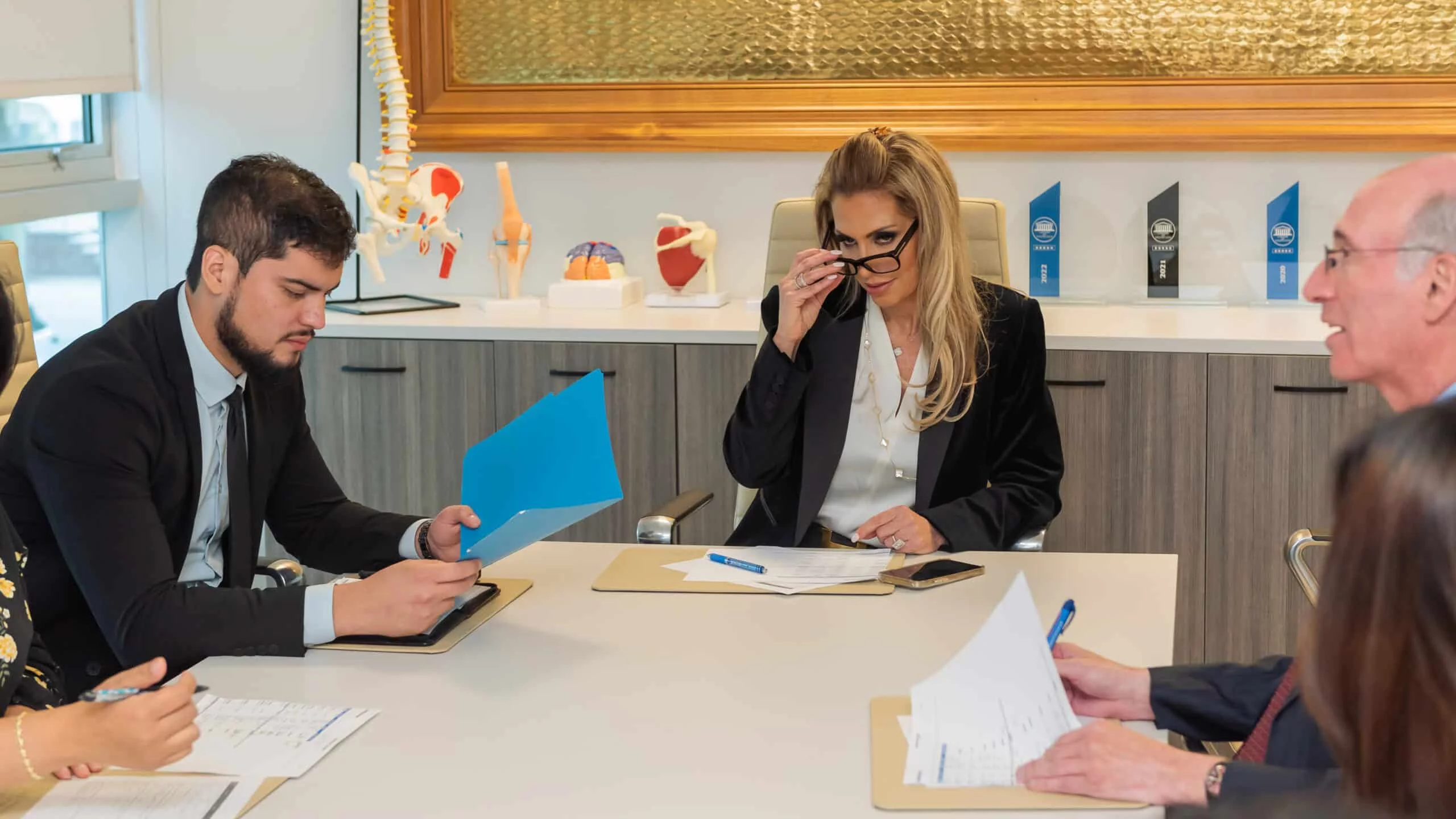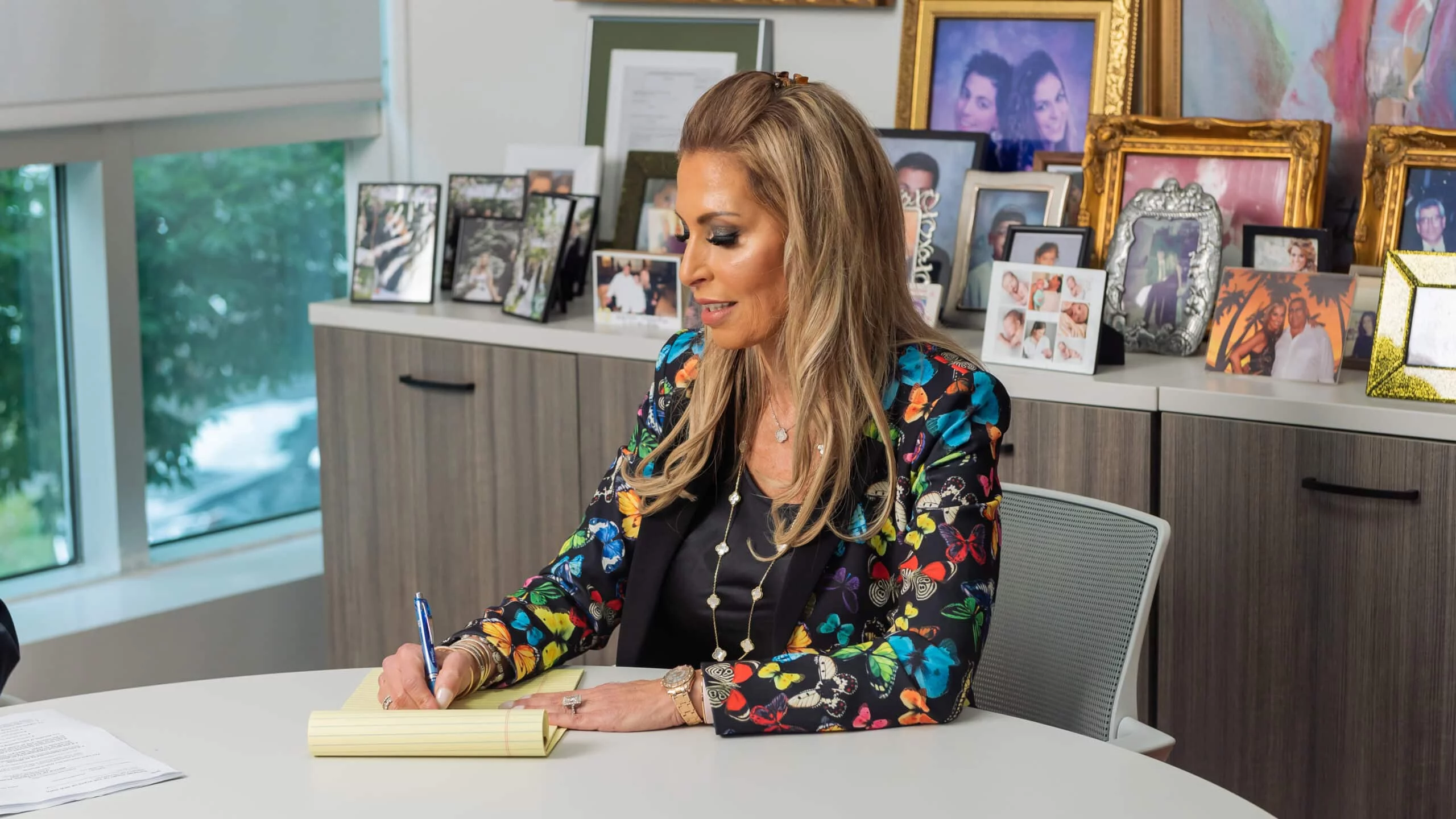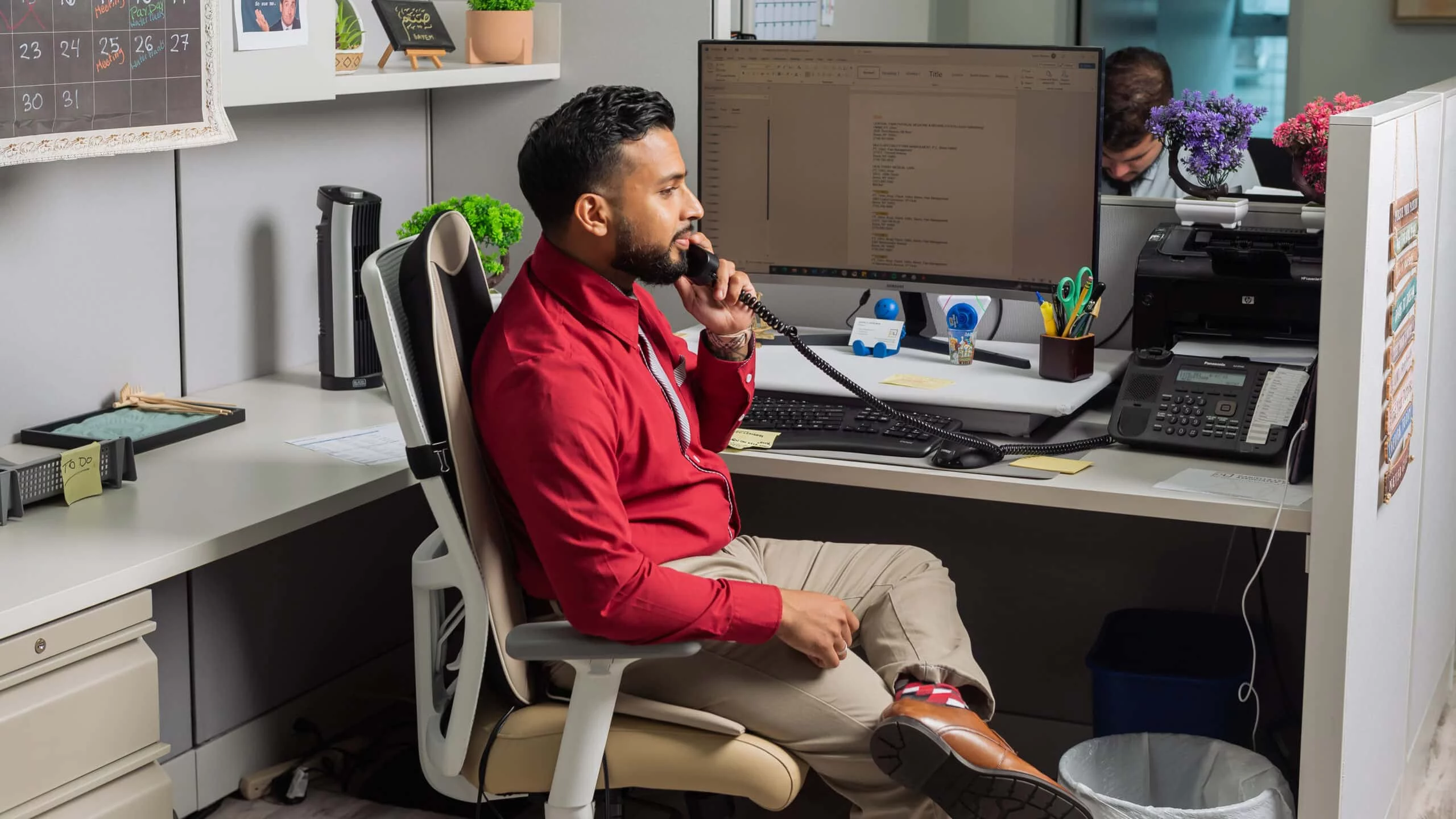Accidents In Construction, NY
Construction accidents are an unfortunate reality that can transform lives in an instant. Whether you’re a worker on the front lines or someone affected indirectly, understanding the intricacies of these accidents is crucial.
This article offers a comprehensive exploration of construction accidents in New York, shedding light on their causes, consequences, and the protective measures that can be taken. Beyond just facts and figures, you’ll discover useful insights and guidance, especially when it comes to seeking legal assistance.
By the end of this article, you’ll be better equipped to navigate the complexities of construction accidents, advocate for safety, and make informed decisions should you ever be faced with such a predicament.
What You Need to Know About Accidents in Construction, NY
Construction accidents in New York City saw an uptick in 2022, with an increase in incidents, injuries, and fatalities as compared to the previous year, underlining a critical concern for the safety of construction workers.
New York City, with its ever-evolving skyline, always seems to be buzzing with construction activity. In 2022, the city issued more initial permits for new projects, including new building constructions and demolitions, than the year before. A report from the New York City Department of Buildings suggests that this surge can be attributed to developers hurrying to secure permits before the 2022 NYC Construction Codes implementation and the expiration of the 421-a tax program.
However, the 2022 New York City Construction Safety Report reveals a concerning trend. While the construction sector boomed, so did the number of accidents. In 2021, the city recorded 712 construction-related incidents, 505 injuries, and nine fatalities. Shockingly, these figures rose in 2022 to 751 incidents, 554 injuries, and 11 fatalities.
The report reveals that falls have consistently been a leading cause of construction-related fatalities and injuries. From 2020 to 2022, falls accounted for at least half of the construction-related fatalities in New York City. This mirrors a nationwide trend, with OSHA stating that fall incidents are the main cause of death in construction across the U.S.
In New York City, falls also contributed significantly to construction-related injuries during the same period. Each year, less than 50 injuries were caused by falling materials or collapses of scaffolding and shoring structures.
Kazimir Vilenchik, the Acting Commissioner of the Department of Buildings, emphasized the importance of keeping New Yorkers informed about the state of the construction industry. While the incidents have decreased compared to past years, the consecutive increase in worker injuries and fatalities over the last two years is alarming. The findings of the report signal a crucial need to reverse this trend and prioritize safety in construction sites across the city.
Analyzing the Consequences of Falls from Heights
Falls from heights in construction can lead to serious injuries or fatalities, making it essential to understand why they happen and work towards preventive measures.
These incidents may occur because of inadequate safety measures, faulty equipment, or human error. The impact of falls from heights can be life-changing, involving long-term medical care, loss of income, and emotional trauma for the victims and their families. By implementing stringent safety protocols and continued training, such incidents can be significantly reduced, safeguarding the well-being of construction workers.
Dangers of Getting Caught In or Between Hazards
Getting caught in or between objects at construction sites poses a serious risk to workers, often leading to severe injuries or fatalities.
This type of accident typically happens when a worker is compressed between two objects, such as heavy machinery, building materials, or collapsing structures. The consequences can be disastrous, ranging from fractures and amputations to fatalities. Raising awareness about the potential dangers, proper training, and adherence to safety guidelines are crucial steps in minimizing these incidents and ensuring the safety of workers on-site.
The Reality of On-Site Electrocution
On-site electrocution is a harsh reality in the construction industry, because workers often face the risk of having to deal with live wires and electrical systems.
These incidents can result in burns, shocks, and even fatal injuries. To combat the risk of on-site electrocution, it is essential to prioritize electrical safety training, use of proper protective gear, and regular inspection of tools and equipment. By fostering a culture of safety and vigilance, construction sites can become safer environments, reducing the likelihood of electrical accidents.
Exploring the Aftermath of Fires and Explosions
Fires and explosions at construction sites can lead to devastating damages, injuries, and loss of life, necessitating an exploration of their aftermath and preventive strategies.
These incidents can be triggered by a variety of factors, including gas leaks, electrical malfunctions, and improper handling of flammable materials. The aftermath of such events is often catastrophic, involving property damage, severe injuries, and long-lasting trauma. By understanding the causes and consequences, stakeholders can implement safety protocols, conduct regular inspections, and train workers on emergency response to mitigate the risks associated with fires and explosions.
Threats Posed by Exposure to Hazardous Materials
Exposure to hazardous materials on construction sites poses significant risks to the overall health and safety of workers.
These materials can include chemicals, asbestos, lead, and other substances that may cause illnesses, skin conditions, respiratory issues, or long-term health complications. By identifying and properly managing hazardous materials, construction sites can reduce the risk of exposure and ensure a safer working environment. Regular training, use of protective gear, and adherence to safety guidelines are essential steps in protecting workers from the threats posed by hazardous materials.
A Closer Look at Injuries Sustained in Construction Accidents
Injuries sustained in a construction site accident can range from minor to severe, significantly impacting the lives of the victims and requiring an in-depth examination into the incident.
The diversity of activities and machinery on construction sites creates numerous potential hazards. From slips, trips, and falls to getting struck by objects, various incidents can lead to injuries.
In many cases, a lack of protection and inadequate safety measures contribute to the occurrence of accidents. For example, workers may sustain injuries due to falling construction materials or malfunctioning construction equipment. These injuries may include fractures, burns, cuts, and even long-term disabilities. Accidents may occur during the handling of heavy machinery, building structures, or dealing with hazardous substances.
Understanding the kinds of injuries sustained helps stakeholders enforce safety protocols and provide workers with appropriate training and protective gear. Implementing proper safety procedures can significantly minimize the risk of a construction accident and ensure the well-being of individuals on-site.
Assessing the Impact of Property Damage
Property damage in construction projects can lead to significant financial losses and delays, ulitmately requiring an assessment of its impact.
Damages can occur for different reasons, including fires, structural collapses, or accidents involving heavy machinery. Construction materials, tools, and completed work can all be subject to damage.
For instance, a poorly operated piece of construction equipment may cause damage to a partially completed structure or other valuable assets on-site. This not only leads to financial loss but also can delay project timelines, affecting the overall productivity and success of the project.
By taking the time to assess and learn from past incidents, project managers can implement strategies to prevent property damage. This involves careful planning, regular inspections, adherence to safety guidelines, and ensuring that all equipment and materials are handled correctly and safely.
Understanding Fatalities in Construction Incidents
Fatalities at construction sites are tragic occurrences that focus on the inherent dangers of the industry, highlighting the need for understanding and prevention.
Numerous factors contribute to deaths in construction, including falls and equipment malfunctions as well as exposure to hazardous materials.
For example, a construction site accident involving heavy machinery can lead to fatal outcomes if there is a lack of protection for the workers. Such accidents can occur when safety protocols are ignored or when workers are not adequately trained to handle the tasks or equipment assigned to them.
Understanding the circumstances and causes of these fatalities is crucial for implementing measures to prevent similar incidents in the future. By investing in safety training, ensuring proper usage and maintenance of construction equipment, and monitoring the handling of construction materials, it is possible to significantly reduce the risk of fatalities and create a safer working environment for everyone involved.
Vulnerable Occupations in the Construction Industry
Occupations such as laborers, electricians, roofers, and demolition workers face higher risks due to the nature of their tasks.
These professionals are often exposed to hazardous conditions that make them particularly susceptible to accidents and injuries. Laborers, for instance, engage in heavy lifting and operate machinery, making them prone to musculoskeletal injuries. Electricians may encounter risks such as electric shocks or burns while dealing with live wires and electrical installations.
Roofers face a high risk of falls, given the elevated nature of their work, while demolition workers are exposed to dangers from collapsing structures and airborne particles. Similarly, carpenters, welders, and plumbers also encounter specific risks associated with their specialized tasks. These occupations often require working with potentially dangerous tools and materials or in precarious positions, increasing the likelihood of accidents.
Understanding the vulnerability of these occupations is essential to help devise targeted safety protocols and preventive measures. By recognizing the distinct risks associated with each profession, construction industry stakeholders can work towards creating safer working environments and implementing protective measures tailored to each occupation.
Taking Proactive Steps for Construction Accident Prevention
Proactive steps for construction accident prevention involve anticipating and addressing potential hazards before they cause any harm or damage.
By implementing a culture of safety and vigilance, organizations can minimize accidents and improve overall site conditions. Regular risk assessments can identify potential hazards, enabling the timely implementation of preventive measures.
For instance, ensuring that all equipment is properly maintained and that workers are equipped with the necessary protective gear can significantly reduce accidents. Clear signage indicating potential dangers and proper organization of construction materials can prevent mishaps. Additionally, conducting safety drills and establishing clear emergency protocols can prepare workers to respond effectively in case of an accident.
By taking these proactive steps, construction companies not only comply with safety regulations but also foster a culture of responsibility and care, ensuring the well-being of all workers on site.
The Role of Training and Education in Construction Safety
Training and education enhances construction safety by providing workers with the knowledge and skills necessary to navigate potential hazards.
Comprehensive training programs can provide workers with insights into risk identification, proper use of equipment, and adherence to safety protocols. For example, educating workers on the proper handling and storage of construction materials can prevent accidents related to falls or collapses.
By investing in ongoing training programs, construction companies can ensure that their workers are up-to-date with the latest safety practices and regulations. Education can also foster a culture of safety awareness, where workers are proactive in identifying and addressing potential risks. Training can also include first aid and emergency response procedures, ensuring that workers can effectively respond in case of an accident.
Ultimately, prioritizing training and education in construction safety is an investment in the overall well-being and productivity of workers, contributing to the successful and safe completion of construction projects.
Enforcement of Safety Regulations and its Importance
Enforcing safety regulations is crucial to ensuring that construction sites adhere to established standards, thereby preventing accidents and enhancing overall safety.
Strict enforcement ensures that all safety protocols, from the use of personal protective equipment to proper handling of construction materials, are followed precisely.
Regulatory bodies conduct ongoing inspections to ensure that construction companies comply with safety regulations. These inspections can help identify potential violations or hazards, allowing for corrective actions to be promptly taken. Additionally, enforcement ensures that companies are held accountable for any lapses in safety, promoting a culture of responsibility and diligence.
By enforcing safety regulations, stakeholders can ensure that all aspects of construction work, from the initial planning phases to the completion of projects, prioritize the safety and well-being of workers and the general public. This enforcement acts as a deterrent for negligence and encourages companies to proactively integrate safety measures into their operations, leading to safer and more secure construction environments.
When to Consider Legal Assistance After a Construction Accident
After an accident on a construction site, it is imperative to assess the situation carefully and seek legal counsel if there are any uncertainties or substantial losses involved.
For instance, if an individual has been injured due to malfunctioning construction equipment or due to the negligence of others on the site, consulting a lawyer can be very beneficial. Legal professionals can guide victims through the nuances of workers’ compensation claims, personal injury lawsuits, and other applicable legal avenues.
In scenarios involving long-term injuries, fatalities, or disputes regarding liability, having a legal representative can be invaluable. Legal assistance can help victims understand their rights, evaluate the merits of their case, and determine the best course of action.
Furthermore, lawyers can aid in collecting evidence, speaking with and negotiating with insurance companies, and representing the victim in legal proceedings.
Choosing the Right Construction Accident Lawyer
Choosing the right construction accident lawyer is crucial for injured construction workers seeking justice and compensation for their injuries and losses.
The ideal lawyer can significantly impact the outcome of your case, ensuring you receive the support and representation you deserve. To select an effective advocate, consider the following factors:
- Experience: Look for experienced construction accident lawyers who have a successful history of dealing with similar cases. Evaluate their knowledge of construction law, workers’ compensation, and personal injury cases.
- Reputation and Reviews: Research online reviews and testimonials from past clients to gauge the lawyer’s reputation. Seek recommendations from friends, family, or colleagues who might have had similar experiences.
- Communication and Accessibility: Ensure the lawyer or law firm is easily accessible and maintains open lines of communication. Assess whether they take the time to explain legal processes and answer your questions clearly.
- Success Rate and Case History: Inquire about the lawyer’s success rate in securing favorable settlements or verdicts for injured construction workers. Request case studies or examples of past cases that align with your situation.
- Fees and Costs: Understand the fee structure, including any contingency fees or additional costs. Determine whether the lawyer offers a free consultation and assess the transparency in their fee structure.
- Personal Comfort and Trust: Trust your instincts and consider whether you feel comfortable discussing your case with the lawyer. Ensure that the lawyer shows genuine concern for your situation and is dedicated to advocating on your behalf.
By considering these, you can make informed decisions and hire a lawyer who is well-equipped to represent your interests and help you navigate the complexities of your case.
What to Expect When Pursuing a Claim
Pursuing a claim after a construction accident involves several steps, from gathering evidence and filing paperwork to negotiating settlements and proceeding to trial.
- Gathering Evidence and Documentation: The first step in pursuing a claim involves collecting all relevant evidence and documentation related to the accident. This may include photos, medical records, eyewitness accounts, and any other information that can strengthen the case.
- Initiating the Claim: The formal process begins by initiating the claim. This can be a workers’ compensation claim, a personal injury lawsuit, or a combination of both, depending on the circumstances. Legal paperwork is filed – detailing the incident, injuries, and the compensation sought.
- Investigation and Evaluation: Both your legal representation and the opposing party will conduct investigations to evaluate the merit of the claim. This phase might involve questioning witnesses, examining medical records, and consulting professionals to build a case.
- Negotiation and Settlement: Often, parties try to reach a settlement before proceeding to trial. Negotiations involve discussing the terms of compensation, including medical expenses, lost wages, and damages. Your lawyer will negotiate on your behalf, aiming to secure the best possible settlement for you.
- Legal Proceedings and Trial: If a settlement isn’t reached, the case may proceed to court. Legal proceedings involve presenting evidence, witness testimonies, and legal arguments. The process can be time-consuming, and the outcome is determined by the judge or jury.
- Resolution and Compensation: Once a verdict is reached or a settlement is agreed upon, the compensation process begins. Depending on the case, payouts can be lump-sum or structured over a period.
- Appeals and Further Actions: In some cases, either party may choose to appeal the court’s decision which may lead to additional legal proceedings.
Understanding these steps can help victims anticipate the course of action when pursuing a claim and prepare them for the challenges that may arise during the process.
Why Representation Matters: Benefits of Having a Lawyer
Having a lawyer by your side after a construction accident can significantly bolster your chances of securing the compensation you deserve while providing valuable guidance through the complexities of the legal system.
When faced with the daunting task of negotiating with insurance companies, legal paperwork, and potentially the court system, victims can find solace in the extensive knowledge and experience of a lawyer. Attorneys who are well-versed in construction accident cases bring a depth of knowledge and experience that is crucial for building a robust case. They understand the nuances of the law and can interpret the often confusing legal jargon that comes with these cases.
One of the significant benefits of having a lawyer is their skill in accurately assessing and valuing a claim. They can determine all potential sources for compensation, ensuring that nothing is left behind when it comes to recovering damages. This could range from medical expenses and rehabilitation costs to lost wages and emotional distress.
Legal representation also levels the playing field, particularly when dealing with major corporations or insurance companies. These entities often have teams of lawyers working to minimize the compensation they have to pay out. Having a dedicated lawyer ensures that your interests are protected and your rights are being advocated.
Moreover, a lawyer brings an objective and pragmatic perspective to the case, helping victims make informed decisions. They can advise on whether a settlement offer is fair or if proceeding to trial would be a more beneficial course of action.
Lastly, having a lawyer allows victims to focus on their recovery. With a trustworthy professional handling the legal intricacies, victims can focus their time and energy on healing without the added stress of legal proceedings.
Ready for Legal Support? Contact Daniella Levi & Associates, P.C. Today
At Daniella Levi & Associates, P.C., every case is personal. The firm’s commitment goes beyond legal representation. We advocate fiercely for the justice and compensation you deserve while providing the empathy and understanding you need during this challenging time.
Why settle for generic advice when you can have a team that knows the nuances of construction accidents like the back of their hand? Daniella Levi & Associates, P.C. brings a unique blend of rigorous legal acumen and heartfelt support, so you will never feel like just another case number. Here, your story matters, your pain is acknowledged, and your fight for justice is shared.
Embarking on the legal journey can be daunting, but you don’t have to do it alone. Take the first step towards regaining control and reclaiming your peace of mind.
Reach out for a free consultation at 718-380-7440 today and let the team at Daniella Levi & Associates, P.C. illuminate the path to justice with clarity and confidence.






